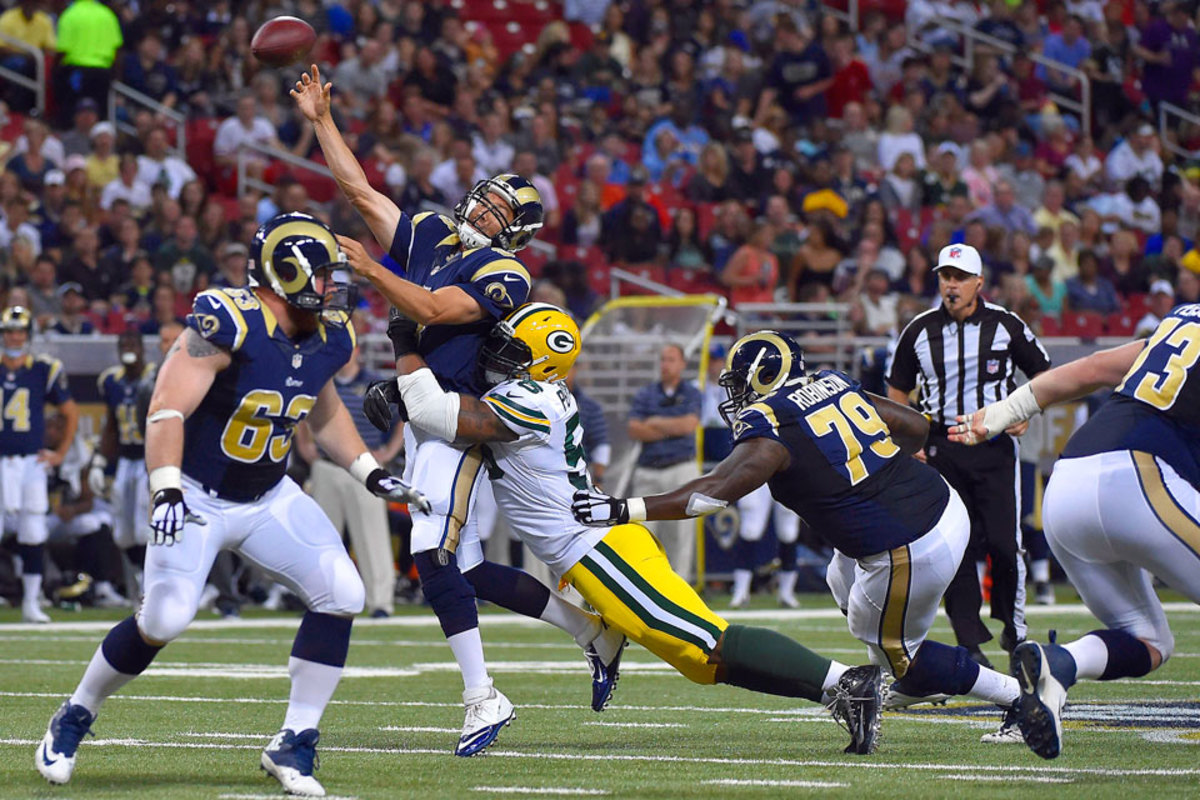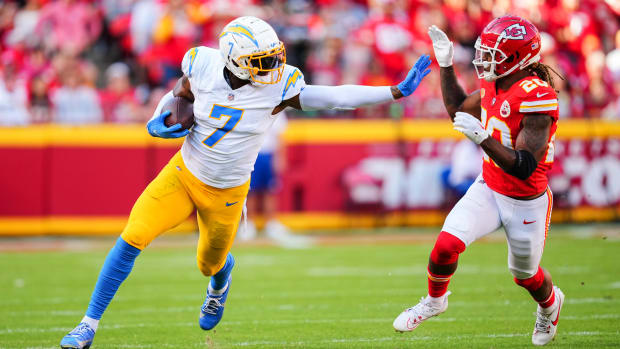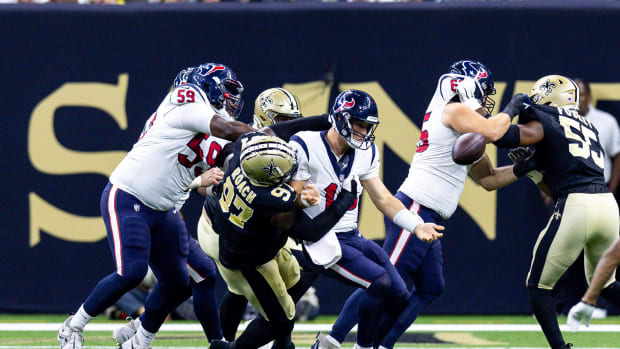
Betting on Julius Peppers
There are some NFL general managers who fervently believe that football teams should be built almost exclusively through the draft. Ted Thompson is one of them. In fact, he might be the face of this creed. But the Packers’ GM also honors one of its most important tenets: the almost.
Before this past offseason, Thompson last signed a marquee free agent in 2006: ex-Raider Charles Woodson for seven years and $52.7 million. The deal didn’t come together until a month and a half into free agency, odd timing for such a substantial move. At the time, Thompson thought he was getting a mere cornerback. As it turned out, Woodson evolved into a sensational five-tool player. He found his niche as a slot corner and a miscellaneous linebacker in defensive coordinator Dom Capers’s nickel and dime packages. He was instrumental not just in a handful of blitz designs but also some of the core run-stopping ploys. In seven years, Woodson received four All-Pro nods and won a Super Bowl with the Packers.
In March, Thompson again exercised the exception to his team-building philosophy, signing Julius Peppers for three years and $27 million. While the 34-year-old former Bear/Panther is five years older than Woodson was upon arriving in Green Bay, the hope is that he can have a similar career renaissance.
Like Woodson, Peppers found a surprisingly soft market for his services and signed several weeks after free agency began. Also, like Woodson, he’ll learn to play a new position. A 4-3 defensive end throughout his career, Peppers will stand up and play outside linebacker in Green Bay’s base 3-4. (In nickel, however, he’ll likely return to his familiar end spot as the Packers will often employ a four-man front.)
PACKERS PREVIEW:There’s Not a Deeper, More Talented Team in the NFC
While changing positions at such an advanced age is unusual for a likely future Hall of Famer, it shouldn’t be a problem. Considering how gap concepts work, the difference between a 4-3 end and a 3-4 outside backer is often miniscule. Schematically, most of Peppers’s assignments will follow the same concepts that would be his in a 4-3. The only major change will be in his mechanics of execution, as he’ll read blockers from new angles.
It’s uncommon but not unheard of for a successful defensive end to move to 3-4 outside linebacker. But most of these players see a drop-off in production. According to Football Outsiders, 11 have made such a change since 2000 following a season in which they had at least six sacks. Only one increased his sack total after moving to outside linebacker.
Player | Sacks as a 4-3 end | Seasons | Sacks as a 3-4 OLB |
John Abraham | 11.5 | <— 2012 — 2013 —> | 13.0 |
Andre Carter | 11.0 | <— 2009 — 2010 —> | 2.5 |
Elvis Dumervil | 11.0 | <— 2012 — 2013 —> | 9.5 |
Greg Ellis | 8.0 | <— 2005 — 2006 —> | 4.5 |
Dwight Freeney | 7.5 | <— 2011 — 2012 —> | 5.0 |
Robert Mathis | 9.5 | <— 2011 — 2012 —> | 8.0 |
Robert Geathers | 10.5 | <— 2006 — 2007 —> | 3.5 |
Aaron Kampman | 9.5 | <— 2008 — 2009 —> | 3.5 |
Kenard Lang | 7.0 | <— 2004 — 2005 —> | 2.0 |
Jabaal Sheard | 7.0 | <— 2012 — 2013 —> | 5.5 |
Mario Williams* | 8.5 | <— 2010 — 2011 —> | 5.0 |
*Williams had five sacks in just five games before going on injured reserve with a torn pectoral muscle.
Peppers had seven sacks in Chicago last season (he’s averaged 9.9 per season over 12 years). His sack numbers have always been artificially low because of the extra attention he draws from blockers. Last season, that attention started going elsewhere. Peppers still flashed his athletic brilliance, but it was only in spurts. Too often he disappeared for long stretches, and not just as a pass rusher but also against the run, a facet of his game in which he was always dominant.
Thompson is essentially betting that a position change will either rejuvenate Peppers or at least halt his decline. For what the preseason is worth, Peppers has looked both good and bad. He was consistently a beat slow in the opener against Tennessee, but was noisier as a pass rusher and much sturdier in run support this past Saturday at St. Louis.
MORE JULIUS:Spiced up With Peppers
Peppers’s success won’t hinge solely on how he transitions to 3-4 outside backer. Coaches insist they’ll use him all over. That’s the type of thing most coaches these days say about any new defensive acquisition. But this time we can believe them. Dom Capers’s sub-packages are very eclectic. In recent years they’ve expanded and diversified the deployment of linebacker Clay Matthews, featuring him more inside on blitzes and zone exchanges.
Interior rush designs could suit Peppers well. At 6’7” and 285 pounds, and given his familiarity of working in traffic, he can be an excellent blocker-eating decoy in Capers’s fire-X zone blitzes, when both inside linebackers crisscross on their way to the quarterback.
TRAINING CAMPS:The MMQB’s hub for all 32 NFL teams
Many of the other fire zone (i.e. zone blitz) concepts also call for edge rushers to show blitz and then drop into coverage. And so do some of the base 3-4 ploys. Whether or not Peppers can do this remains to be seen. A recent visit to the Packers’ training camp revealed nothing. Going to watch Peppers practice is akin to whale watching—you might see something, but maybe not. He’s not known for taking high repetitions.
What can be assumed is that Peppers won’t be able to cover top-tier tight ends. (Few outside backers, let alone new ones learning the position, are able to.) The Packers need a plan for when offenses aim to widen the formation by motioning or shifting a player out to the slot on his side. Learning to play to help defenders in zone will be critical for Peppers, especially if he continues declining the way he did last season.





































